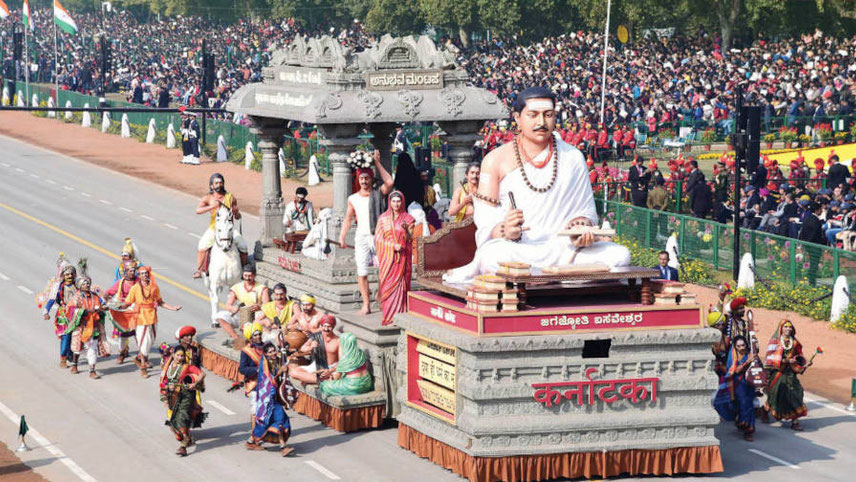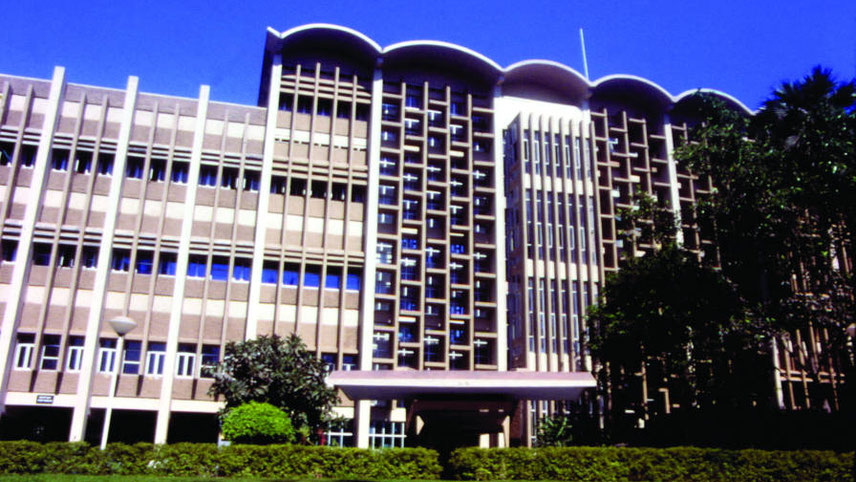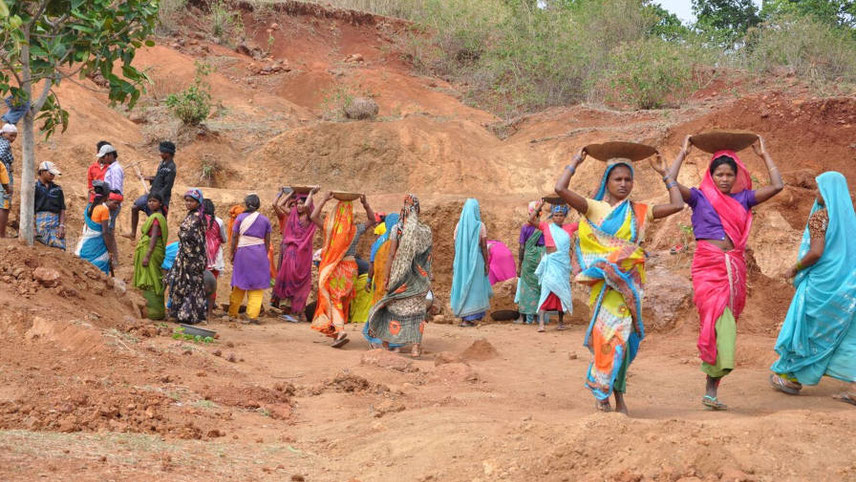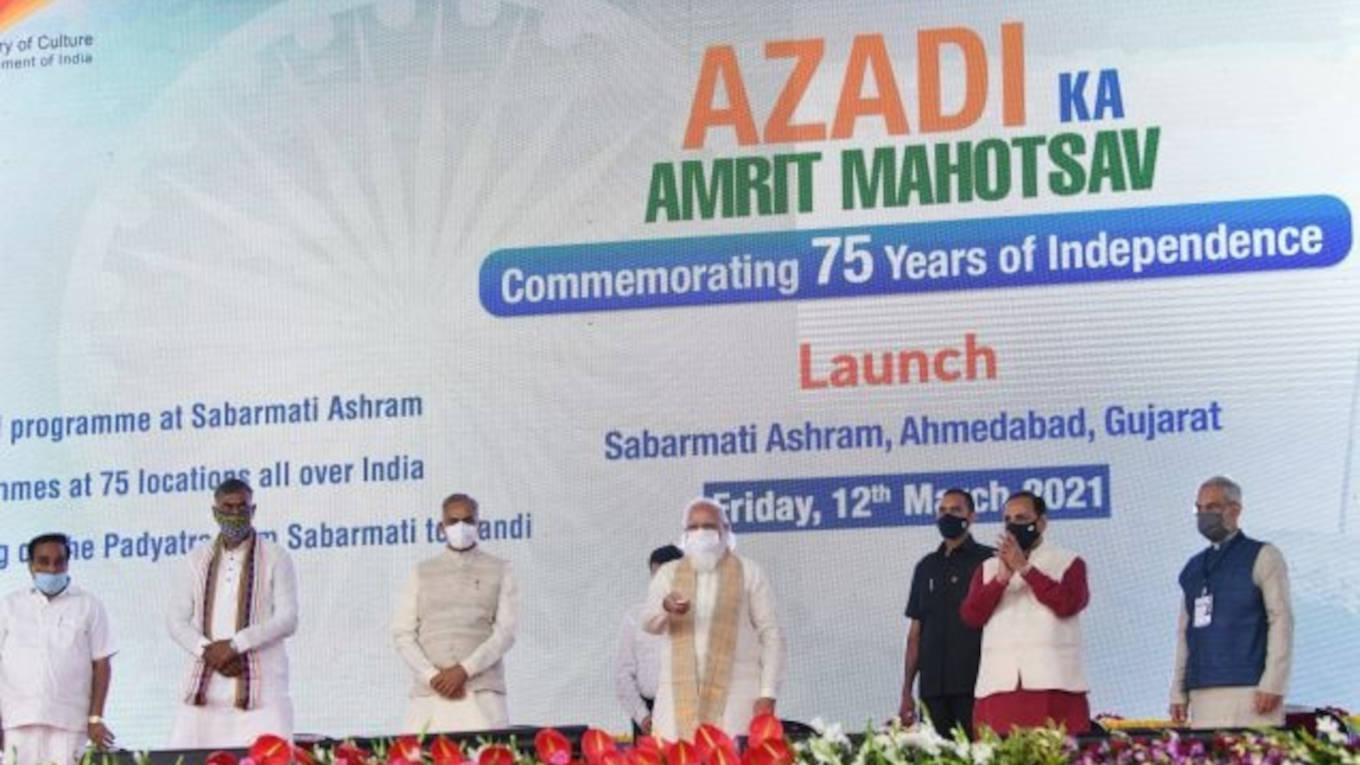-

People’s participation in governance: a replica of Lord Basaveshwara’s 12th century academy Anubhava Mantapa
In 1947, literacy rate in India was only 12 per cent. It had risen to 74.04 per cent by 2011 (when the last census was held). As for per capita income, according to the data from the National Statistical Office of the Ministry of Statistics and Programme Implementation, the per capita income in real terms during 2019-20 touched Rs1.32 lakh, as against Rs250 per year in 1947.
During these seven decades and a half, the standard of living in India of an average Indian has improved, though there is scope for more improvement. As for poverty removal, the World Bank in its latest report on the poverty in the country said India saw a massive 12.3 percentage points decline in extreme poverty between 2011 and 2019-from from 22.5 per cent in 2011 to 10.2 per cent in 2019.
Another major achievement of post-independence India has been the building and developing of some world class institutions of higher education, which began with Indian Institutes of Technology (IITs), All India Institute of Medical Sciences (AIIMS) and Indian Institutes of Management (IIMs). The role of these institutions is important, because quality academic education has been disseminated there at nominal cost.
Over the years, this has made such world class institutions economically accessible to a huge section of Indian population. This in turn has helped many underprivileged but brilliant people to quickly move up the economic and social ladder and also derive name and fame in overseas. Side by side, we saw the rise of private centres of academic excellence, such as BITS Pilani and Manipal Academy of Higher Education.
At present, new private sector-propelled institutions like Asoka University and Jindal Law School are making a mark in the words of academia. The government should not place any regulatory roadblocks in development.
Half-done
Another of the great achievements of independent India is the huge investments in developing basic heavy industries during the mid 1950s, which helped to develop the infrastructural backbone of India in the form of huge steel plants and dams, etc. Massive investment in developing heavy industries was the central theme of the Second Five Year Plan of India (1956-61). The plan was based on the Mahalanobis model.
It is somewhat disappointing that like the emphasis governments in the first 3-4 decades of independence gave to public sector-led development, the governments that followed did not change the paradigm decisively enough for the private sector to take the lead. That would have transformed the economic landscape by now. On infrastructure, except for roads and airport infrastructure which have improved over the last decade, we seem to be lagging other emerging economies.
The Green Revolution (1966) gave a huge impetus to our agricultural production and made it self-sufficient in terms of food grains through the usage of high yield and extensive use of tractors, pesticides and fertilisers. But, after some time, we failed to push other components of growth required for modern farming – mechanisation, crop diversification and strengthen the agricultural marketing system to ensure higher value to the farmers through remunerative prices of their produce by taking advantage of the domestic and export opportunities.
-

Big achievement: building and developing of world class institutions like IITs
The nationalisation of banks in1969 is a much-reviled thing. But it did initially help the economy grow by extending more credit to common people, who did not have the right connections. This, in turn, also contributed to equitable growth economy to some extent. But after some time, this should have been totally reversed to allow the private sector to bring in competition and related efficiencies. The same goes for agriculture. But after bringing in laws to liberate the farming sector, the government buckled under political pressure and rolled back the reforms.
The advent of massive computerisation in the mid-1980s, amidst stiff, unjustified opposition during the Rajiv Gandhi government, is another of the important positive developments for post-independence India. This move eventually catapulted India into a huge IT power to reckon with. In the recent years, digitisation in India has gained further momentum, which has led to spurt in online education in India.
Social empowerment
One of the landmark developments in the evolution of a free society happened during the UPA years. This was the Right to Information Act in 2005. It is easily amongst the most important legislations of India. This act empowers common citizens of India to make the high and mighty of the state accountable to them. RTI was envisaged as one of the strongest information laws in the world. It was successful in enhancing transparency and probity in public offices in India and could have helped in checking to some extent the post-modern India’s perpetual malaise of corruption in public offices. But it is unfortunate that the current regime sees no use for it.
Mahatma Gandhi National Rural Employment Guarantee Act (MGNREGA) was another legislation of India that had a deep-rooted impact on rural welfare and social empowerment. It endeavours to enhance livelihood security in rural areas by providing at least 100 days of wage employment in a financial year to every Indian household whose adult members voluntarily consent to do unskilled manual work. However, the implementation of this s legislation has been marked by several pitfalls. Still, it is a safety valve, which even the Modi government, after ridiculing it, has deployed now and then, to defuse the rural angst.
Another noteworthy achievement of post-independence India is the vast improvement in the economic and social status of its women. Before 1947, the identity of Indian women was mostly confined to the four walls of the household. They were subjugated by patriarchy, though some did emerge out of its clutches and carved a brave new world for themselves.
Women of post-independence India have made their mark in almost every profession, ranging from boxing to the armed forces, from scientific research to entrepreneurship. Today, Indian women are seen as fighter pilots and also as heading multimillion-dollar business empires. Recent schemes like beti bachao, beti padhao, to promote education of young girls have abetted this process. Yet, recent reports have talked of their re-marginalisation in the workforce. This process must be arrested and reversed.
-

Rural welfare and social empowerment: MGNREGA is a landmark development
The idea of 75 years
To commemorate and celebrate the completion of 75 years of Independence, the Modi government had launched the 75-week long azadi ka amrit mahotsav initiative. The government has also launched the ‘har ghar tiranga’ – a campaign under the aegis of azadi ka amrit mahotsav to encourage people to bring the tricolour home and hoist it to mark the 75th year.
The idea is to kindle the spirit of patriotism among the people, particularly the younger generation. Our younger generation dreams about the future but is largely ignorant about the past, particularly the tumultuous and painful years which led to our freedom. Their relationship with the flag has always been more formal and institutional than personal.
Bringing the flag home collectively as a nation and hoisting it collectively on 13-15 August thus becomes symbolic of not only an act of personal connection to the Tiranga but also an embodiment of our commitment to nation-building. Azadi ka amrit mahostav kicked off in March 2021. It will end post a year on 15 August 2023.
The mahotsav was meant to enhance interaction and promote mutual understanding between people of different states and Union Territories, by conducting activities in the areas of language, learning, tangible as well as intangible culture and heritage, paving the way for systematic process of mutual engagement and appreciation amongst people. Has this goal been achieved?
Politics again
As it happens in India, politics started creeping into the event as soon as it was announced. The Mamata Banerjee-led Trinamool Congress government in West Bengal announced that it will not be part of the Centre's mega initiative to celebrate India's 75 years of independence. The party alleged that its non-participation in the central initiative was because of a ‘lack of a cohesive approach’ by the Union government to work with states. This is not new for the TMC that has often boycotted Central schemes.
The increasing polarisation in our politics, the disruption of Parliament as well the inability of political parties to forge a consensus on issues of vital national importance is something that neither our founding fathers nor the framers of our constitution has realised. India cannot progress holistically just by the might of brute force, whatever the size of its market and how so ever impressive the growth of our economy.
Challenges galore
Then, there are the fresh, daunting challenges that are staring us in the face. Yet, we have not bothered to even begin an effort to tackle them. For instance, India is facing the worst water crisis in history. The NITI Aayog has warned that the demand for drinking water will outstrip supply by 2030, if preventive steps are not taken.
Also, India’s farm economy is in turmoil. This has serious consequences as an estimated 260 million citizens work in agriculture, making 55-57 per cent of India’s population dependent on the sector.
-

Women empowerment: fighter pilots and more
One of our big failures has been the inability to remove criminalisation from politics. It is alarming that more than 40 per cent of members of Parliament in the 2019 Lok Sabha were tainted with some sort of criminal record – an increase of 26 per cent over the 2014 Lok Sabha figures.
The failure to remove the bane of casteism and communalism from politics is another collective failure. Increasing criminalisation and communalisation of politics lowers the essence of electoral democracy and the sooner our political establishment realises it the better it will be.
Our political parties should take a leaf from the fascinating political contest going on in the UK for the Conservative Party leadership, where the debate is moving from the economy and foreign relations to internal security and immigration. Each contender is questioning the others’ record in office, political and ideological perspectives. There is no place for race or religion in the debate.
Most importantly, unemployment is a ticking time bomb. According to Centre for Monitoring Indian Economy, total employment fell by a massive 13 million to 390 million in June 2022, compared to 403 million in May, the lowest level since July last year. Through its Agnipath scheme, the government has shrunk the demand for armed personnel. Opportunities in private equity funded new-world jobs have also come down. Clearly, the economy needs to grow at a faster pace than it may in the near future to save and generate jobs.
To tackle such challenges, the Centre will have to take all the states and political parties on board, building consensus by using platforms like the National Development Council which have fallen into disuse during the Modi regime. But, for this, the ruling dispensation will have to be far-thinking, reaching out to rivals and critics, and shedding its political arrogance.






































